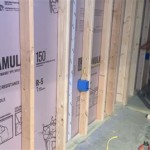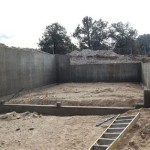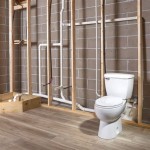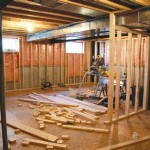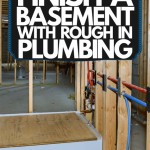Safe Radon Levels in Basements in Michigan: What Residents Need to Know
Radon is a naturally occurring, colorless, odorless, and tasteless radioactive gas that can pose a significant health risk, especially in enclosed spaces like basements. In Michigan, due to the state’s geology, radon can be a common issue affecting homes and buildings. Understanding safe radon levels, the risks associated with elevated levels, and the methods for testing and mitigation are crucial for ensuring the health and safety of residents.
This article provides a comprehensive overview of safe radon levels in basements in Michigan, outlining the sources of radon, the health implications of exposure, testing protocols, mitigation strategies, and the regulatory framework governing radon management in the state. It aims to equip homeowners, tenants, and property managers with the knowledge necessary to make informed decisions about radon testing and remediation.
Understanding Radon and Its Sources
Radon originates from the natural breakdown of uranium in soil, rock, and water. As uranium decays, it produces radium, which in turn decays into radon gas. Radon gas can then migrate through the soil and enter buildings through cracks and other openings in the foundation. Basements, being below ground or partially below ground, are particularly susceptible to radon accumulation due to their proximity to the soil and the stack effect, which draws air from the ground into the building.
The geology of Michigan plays a significant role in the prevalence of radon. Certain areas of the state have higher concentrations of uranium in the soil, leading to a greater risk of elevated radon levels in homes. The Michigan Department of Environment, Great Lakes, and Energy (EGLE) provides resources and maps indicating radon potential across different counties, allowing residents to assess the risk in their specific location.
Factors such as soil permeability, the presence of fractures in bedrock, and the construction of the building itself can influence the amount of radon that enters a home. Homes built on well-drained, porous soil may be more prone to radon infiltration than those built on dense, clay-rich soil. Similarly, homes with numerous cracks or openings in the foundation are more likely to experience elevated radon levels.
Radon levels can fluctuate over time due to changes in weather conditions, soil moisture, and ventilation patterns. During periods of heavy rain or snowmelt, the soil may become saturated, preventing radon from escaping into the atmosphere and increasing the likelihood of it entering buildings. Similarly, during the winter months, when homes are tightly sealed to conserve heat, radon can build up to higher concentrations.
Health Risks Associated with Radon Exposure
The primary health risk associated with radon exposure is lung cancer. When radon gas is inhaled, it emits alpha particles that can damage the cells lining the lungs. Over time, this damage can lead to the development of cancerous tumors. The risk of lung cancer from radon exposure is significantly higher for smokers, as the combination of radon and tobacco smoke has a synergistic effect, increasing the likelihood of developing the disease.
The United States Environmental Protection Agency (EPA) estimates that radon is the second leading cause of lung cancer in the United States, responsible for approximately 21,000 deaths each year. While the vast majority of radon-related lung cancer cases occur among smokers, non-smokers are also at risk, albeit at a lower rate.
The risk of developing lung cancer from radon exposure is cumulative, meaning that the longer a person is exposed to elevated radon levels, the greater their risk becomes. Even relatively low levels of radon exposure over an extended period can increase the risk of lung cancer. Therefore, it is important to test homes for radon and take steps to mitigate elevated levels, regardless of how low they may seem.
There is no known safe level of radon exposure, but the EPA has established an action level of 4 picocuries per liter (pCi/L) of air. This level represents the point at which the EPA recommends taking action to reduce radon levels in a home. However, the EPA also recommends considering mitigation at levels between 2 pCi/L and 4 pCi/L, especially for individuals who are at higher risk of developing lung cancer, such as smokers or those with a family history of the disease.
Testing for Radon in Michigan Homes
Testing for radon is the only way to determine whether a home has elevated radon levels. Radon testing is relatively simple and inexpensive, and it can be performed by homeowners themselves or by certified radon professionals. There are two main types of radon tests: short-term tests and long-term tests. Short-term tests typically measure radon levels over a period of two to seven days, while long-term tests measure radon levels over a period of 90 days or more.
Short-term tests are useful for providing a quick indication of radon levels, but they may not accurately reflect the average radon level in a home due to fluctuations in radon concentrations over time. Long-term tests provide a more accurate assessment of the average radon level in a home, as they account for these fluctuations. The EPA recommends using a short-term test for initial screening, followed by a long-term test if the short-term test result is above the action level of 4 pCi/L.
Radon test kits are available for purchase at most hardware stores and online retailers. These kits typically include a radon detector, instructions for deploying the detector, and a postage-paid mailer for returning the detector to a laboratory for analysis. When conducting a radon test, it is important to follow the instructions carefully to ensure accurate results. The test should be performed in the lowest livable level of the home, typically the basement, and the windows and doors should be kept closed during the testing period to prevent ventilation from diluting the radon concentration.
Alternatively, homeowners can hire a certified radon professional to perform the radon test. Certified radon professionals have specialized training and equipment to ensure accurate and reliable results. They can also provide guidance on interpreting the test results and recommending appropriate mitigation strategies if necessary. The Michigan Department of Environment, Great Lakes, and Energy (EGLE) maintains a list of certified radon professionals in the state.
It is crucial to test for radon before buying or selling a home. Radon testing is often a contingency in real estate transactions, allowing potential buyers to assess the radon risk and negotiate mitigation measures with the seller if necessary. Sellers are often required to disclose any known radon issues to potential buyers.
Radon Mitigation Strategies
If radon test results indicate elevated radon levels, mitigation measures should be implemented to reduce the radon concentration in the home. The most common and effective radon mitigation technique is soil suction, also known as sub-slab depressurization (SSD). This system involves installing a PVC pipe that extends from beneath the concrete slab of the basement or foundation to above the roofline. A fan is then installed in the pipe to create a vacuum that draws radon gas from the soil beneath the slab and vents it safely outside the home.
The installation of a sub-slab depressurization system typically involves drilling a hole through the concrete slab and creating a small cavity under the slab. The PVC pipe is then inserted into the hole, and the fan is connected to the pipe. The system should be installed by a certified radon mitigation professional to ensure that it is properly designed and installed to effectively reduce radon levels.
Other radon mitigation techniques include sealing cracks and openings in the foundation, improving ventilation in the basement, and installing a radon sump system. Sealing cracks and openings can help to prevent radon from entering the home, while improving ventilation can help to dilute the radon concentration. Radon sump systems are similar to sub-slab depressurization systems, but they are used in homes with crawl spaces instead of concrete slabs.
The cost of radon mitigation can vary depending on the mitigation technique used and the complexity of the installation. Sub-slab depressurization systems typically cost between $800 and $2,500 to install. However, the cost of mitigation is a worthwhile investment, as it can significantly reduce the risk of lung cancer from radon exposure.
After mitigation measures have been implemented, it is important to retest the home to ensure that the radon levels have been successfully reduced to below the action level of 4 pCi/L. Retesting should be performed by a certified radon professional to ensure accurate and reliable results.
Regulatory Framework for Radon Management in Michigan
The Michigan Department of Environment, Great Lakes, and Energy (EGLE) is the state agency responsible for regulating radon management in Michigan. EGLE provides resources and information on radon testing and mitigation, as well as a list of certified radon professionals in the state. EGLE also administers a radon education and outreach program to raise awareness about the risks of radon exposure and promote radon testing and mitigation.
Michigan does not have mandatory radon testing requirements for residential properties, but many real estate transactions include radon testing as a contingency. Sellers are typically required to disclose any known radon issues to potential buyers.
The Michigan Radon Act regulates radon testing and mitigation services in the state. The Act requires radon professionals to be certified by EGLE and to follow specific protocols and standards when performing radon testing and mitigation. The Act also establishes penalties for violations of the regulations.
The EPA provides guidance and recommendations on radon testing and mitigation, and it also offers grants to states to support radon education and outreach programs. The EPA also maintains a database of certified radon professionals across the country.
Local governments in Michigan may also have ordinances or regulations related to radon management. It is important to check with local authorities to determine if any local regulations apply to radon testing and mitigation in a specific area.

Michigan Radon Mitigation Testing Levels Radonresources

Radon Levels In Michigan Contractor Tests Saint Joseph Grand Rapids Galesburg

Radon Levels In Michigan Contractor Tests Saint Joseph Grand Rapids Galesburg

Have You Tested Your Home For Radon Ann Arbor Area Is A Natural Hotspot Mlive Com

County Officials Urge Homeowners To Test For Radon

Michigan Indoor Radon Program Overview

Appendix F Passive Radon Gas Controls Michigan Residential Code 2024 Upcodes

Expert Radon Mitigation In Detroit Mi

Letter To The Editor Students Express Concern About Radon Northville Mi Patch

Radon Gas Testing In Southeast Mid Michigan
Related Posts


